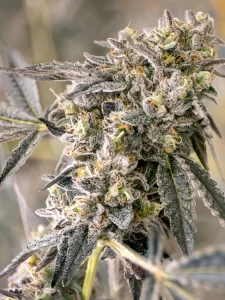As you may know, cannabinoids are chemical compounds that are found in the flowers of the cannabis plant, but do you know how they really work in your body? These chemical compounds bind with receptors inside your body to help balance different systems. There are two types of cannabinoid receptors and four types of cannabinoids. It is important for you to know how they work to reap all of the benefits that cannabis has to offer.
After years of research, scientists found out that the body has what is known as the Endogenous Cannabinoid System. The discovery of this system in the human body is relatively new, but scientists determined that it processes cannabinoids and regulates other bodily functions such as food intake, motor behaviuor, reaction, and reproduction.
In addition, cannabinoids modulate the regulation of homeostasis which is a process that keeps body systems balanced and functioning at their best. Cannabinoids processed by the Endogenous Cannabinoid System benefit you in a lot of ways. Some of these benefits include pain regulation and reduction of inflammation in the body.
Two Types of Cannabinoid Receptors
Now that the basics have been established, you should also know that there are two types of cannabinoid receptors in the human body. The first type pertains to the CB1 receptors, which are located in the brain and spinal cord (the central nervous system). The second type are the CB2 receptors. These receptors are found all over the body outside the central nervous system.
Basically, brain cells communicate with each other and with the rest of the body through chemical messages. These messages help in coordinating how a person will act, feel, and think. However, it is different when the cannabinoids are received by a receptor.
Once cannabinoids are released, they control what will happen next and disrupt the natural flow of sending and passing the message throughout the body. This helps control a variety of psychological processes to include:
– Appetite
– Mood
– Pain-Sensation
– Memory
Four Types of Cannabinoids and How They Work
The four types of cannabinoids are the following: Tetrahydrocannabinol (THC), Cannabidiol (CBD), Cannabigerol (CBG), and Cannabichromene (CBC). These classifications are important for you to better understand how each type of cannabinoid affects your body.
THC is the most famous type of cannabinoid. It has a strong link to the CB1 receptor so it produces psychological effects. Although it is known for such effects, more research has proven that THC has medicinal properties that could potentially help the medical marijuana industry expand. THC treats muscle spasticity, nausea, vomiting, and anorexia. THC is also being studied to find a solution for the immune system-damaging disease called AIDS.
CBD is the complete opposite of THC. It has a strong relationship with CB2 receptors and is non-psychoactive. This type of cannabinoid has been used more often for treating medical issues compared with THC. CBD is also used for people with epilepsy. Studies have also been done to determine if CBD can be used as a treatment for neurodegenerative diseases like Alzheimer’s and Parkinson’s.
The third type of cannabinoid is CBG. It is like CBD because it counters the strength of the “high” that a person gets from consuming THC. CBG has a strong effect on appetite and it is also believed to help with depression and other mood-related problems.
The fourth type is CBC. Just like CBD and CBG, CBC is non-psychoactive. It also does not bind that well with CB1 and CB2 receptors but it is possibly best used for anti-inflammatory medical solutions. It also serves as a better modulator for anxiety or stress compared to CBD.
CBD for Your Health and Body
There are many uses of marijuana and it affects the body in different ways. Cannabinoid is processed through the Endogenous Cannabinoid System and in turn, it helps regulate and balance different systems in the human body. Although marijuana is often used for recreation, it is even more useful for treating a wide range of illnesses with cannabinoids.










